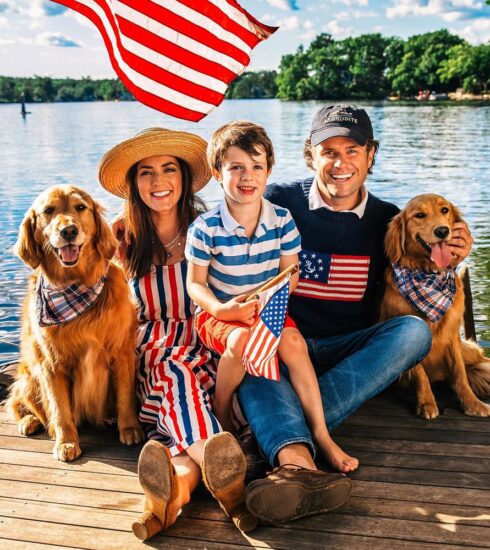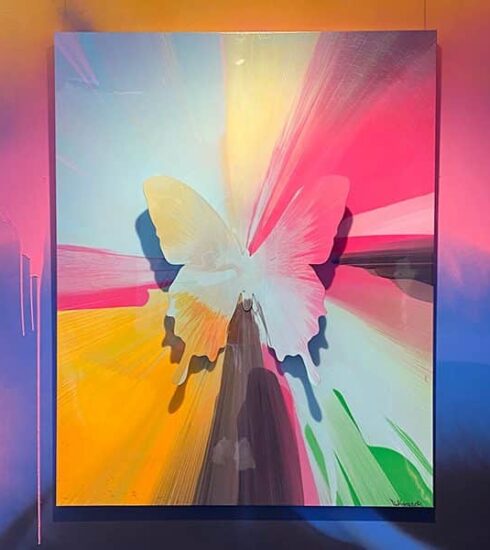Why Annica Benning is a Warrior of Native American Culture
Arizona: Nations and Art by Annica Benning highlighting Arizona and Native American art and culture will be distributed amongst the U.S. State Department’s ‘American Spaces’. The distribution will be funded by the Lovena Ohl Foundation. The U.S. State Department’s ‘ American Spaces’ or rather the Bureau of International Information Programs (IIP) seeks to introduce a myriad of bicultural educational programs and outreach throughout hosting countries of which includes Benning’s sensational work. Benning’s mission since the production of her book is to encourage early literacy, youth volunteerism, diversity, and to dispel the ubiquitous misconceptions surrounding Native Americans.
Like other white American children, Benning learned the usual stereotypes surrounding Native Americans and assumed that most of them lived in tipis. “When I was little, I was always interested in Native American art and culture,” said Benning in a recent interview. “It was almost a little bit disheartening with the lack of information out there because I had so many questions and I just felt like I couldn’t really find the answers.” She was a curious 4th grader who was interested in information beyond feathers and tipis and it all changed when she was given an adult book about Northern Native American culture to read. Benning became transfixed by the photography and details which planted an ambitious seed.
“The ignorance and the misconceptions about the culture is so apparent, “ said Benning. “It wasn’t until I started writing Arizona Nations and Art that I got to learn more about their culture.”
When Benning was 13, she sought to combine her appreciation for Native American art and basket-weaving with her passion for photography into a single composition. She began by traveling across the state of Arizona interviewing Native Artists and appeared before the Hopi American Legion by the time she was 15 to request permission to photograph their land and use their seal for her book.
Benning’s mother, Adi Benning asserts that the tribal councils were hesitant at first to converse with a non-Native person, but the driven teenager’s determination paid off.
The manuscript went through rigorous peer reviews of everyone she interviewed for the project. From basket weavers to silversmiths to national park rangers who made certain her book was accurate even down to the labeling of rocks.
Once the manuscript was approved and completed, it was intended for Arizona State’s Governor Napolitano’s Books For Kids program. However, the newly elected governor Jan Brewer discontinued the program and Benning was at a standstill. She was not dismayed.
“Around this time, Annica and I established the non-profit Walnut Canyon Press to enable fundraising for the distribution of Annica’s book,” said Benning’s mother. “She handles most of the press, websites, PR, goes to all the schools, and does motivational speaking.”
The book was published in 2010 when Benning was 16 and was distributed amongst Arizona State 4th graders. In 2011, Benning and her mother launched Athletes For Literacy in which Cleveland Indians players helped pass out books to kids and discussed the importance of staying in school amongst at-high risk students. Benning was also requested by the U.S. State Department to distribute her book amongst State Department libraries that would also coincide with ‘American Spaces’.
The book offers a vivid, photographic account of the Arizona Native American way of life, including the legacies of admirable warriors and brave military veterans who changed the course of both native and non-native history. The efforts and sacrifices of Hopi Code Talkers mentioned within its pages has allowed the Hopi Nation to use her book as testimony before the Senate in order to recognize the contribution that Hopi soldiers made during World War II. The original soldiers didn’t seek out special recognition after their service in the U.S. military, but in 2007 the Hopi Tribal Council recognized the eight code talkers of the 323rd Infantry, “Wildcat” Division. In 2008, Congress passed a law to issue public medals to all Native American Code Talkers. In 2011 after years of debate, Arizona Secretary of State Ken Bennett officially honored the soldiers from Benning’s book in a formal ceremony at the Hopi Veteran’s Memorial Center.
The Hopi Code Talker bill was just one example of the difference Benning has made towards the preservation of Native American culture. Since 2009, she has donated over 180,000 copies of her book to statewide, nationwide, and soon to be worldwide children and families in November. She has placed special emphasis upon 4th Graders after discovering that 56% of Arizona 4th Graders are financially disadvantaged and at times unable to afford her book. Because of this, an additional 5,000 copies were dedicated to 4th grade classrooms, public and school libraries, military bases, and other libraries worldwide.
Benning is also the co-founder of The Bridge: Youth Summit For Understanding that seeks to cement relations between Native American and Non-Native American adolescents. It is an annual youth summit matched with events that occur annually on tribal lands. The organization was founded in an attempt to work with youth groups and events already established on reservations to help create friendships that will support one another. She asserts that the organization is pro-volunteerism and not-for-profit and that the problems that Native American children endure also impact non-Native American children. The summit launches in 2013.
Calling on Generation Y to make an active effort towards Native cultural preservation, “I think appreciation and making an active effort to preserve Native American culture is key, “ Benning said, “The only way is to get the word out there and spread the message.” Presently, Benning is focused on finishing college at Arizona State University, but has plans to write a second book later down the road for 9th Graders.
[sdonations]2[/sdonations]










